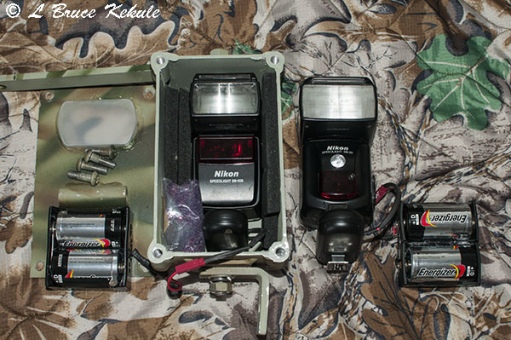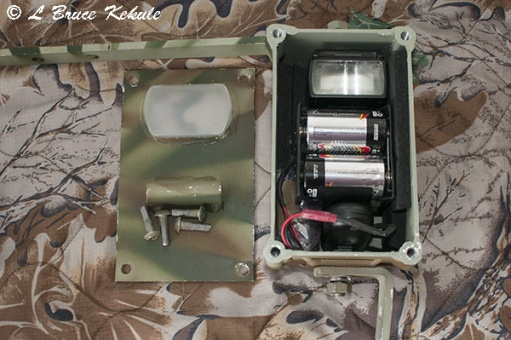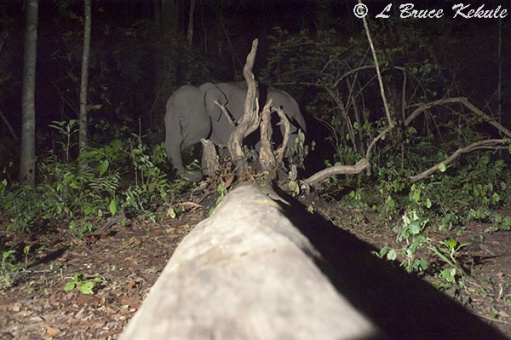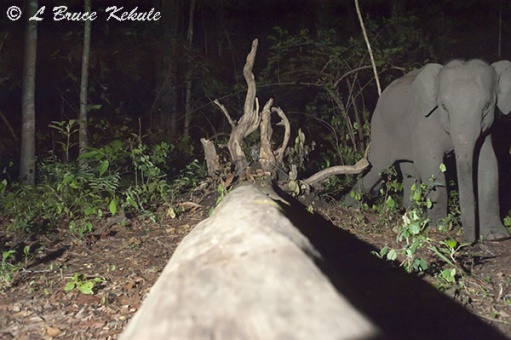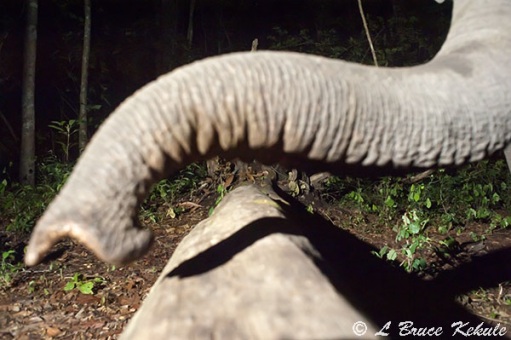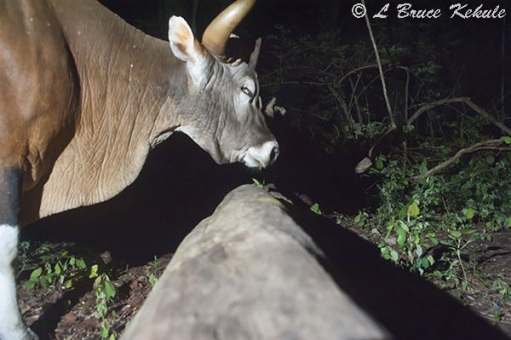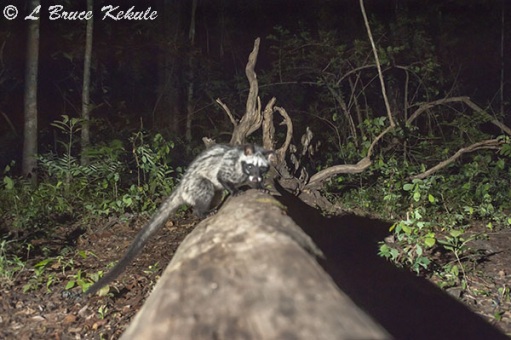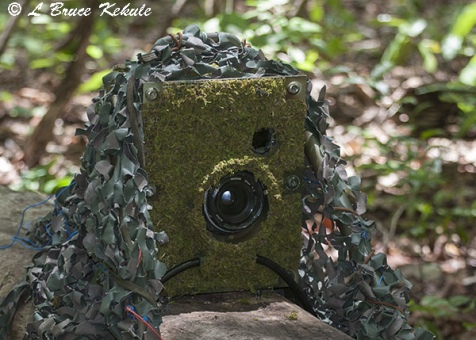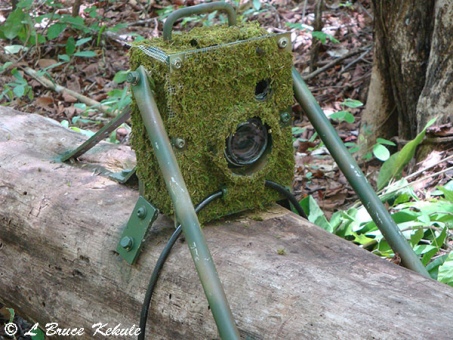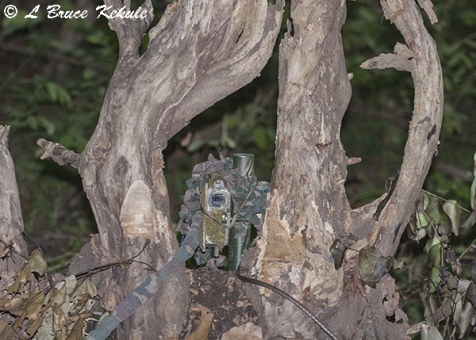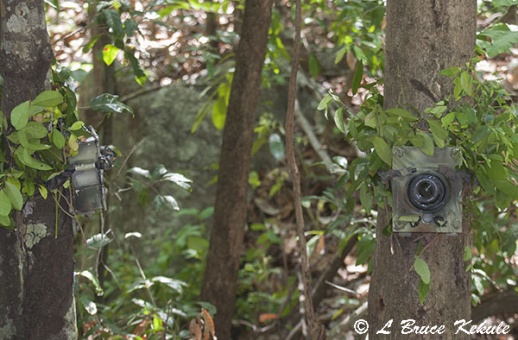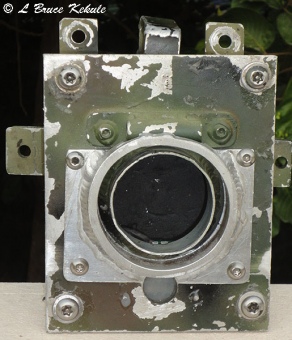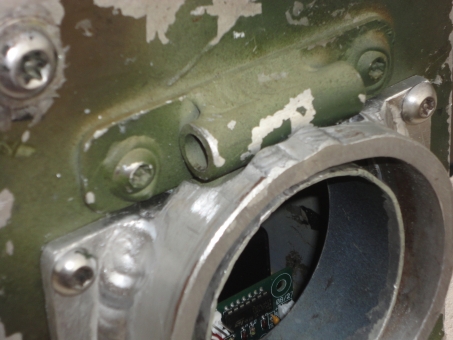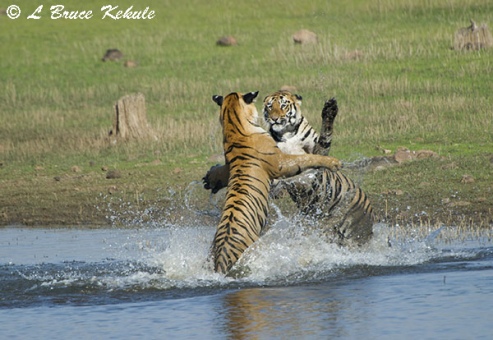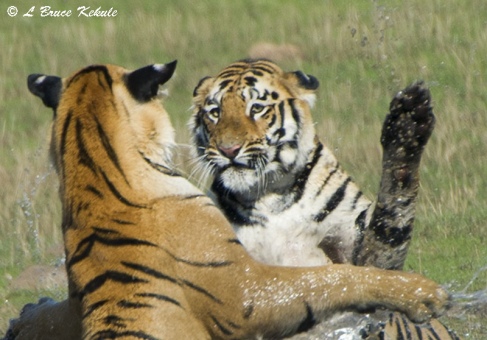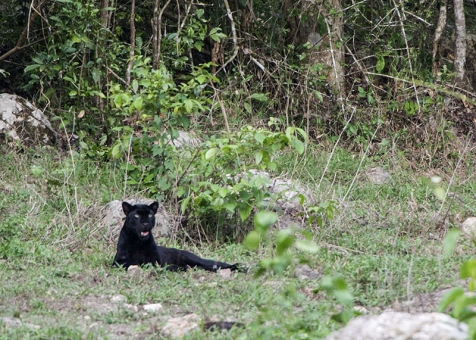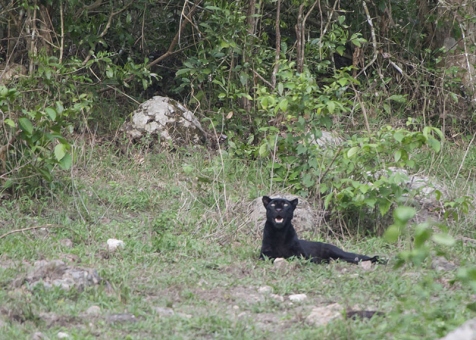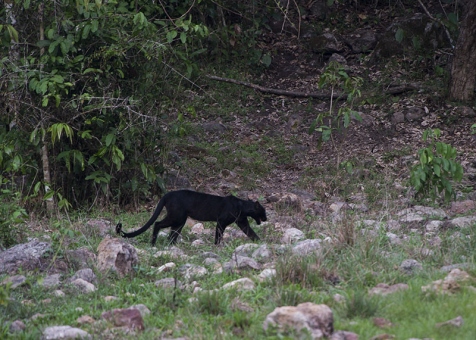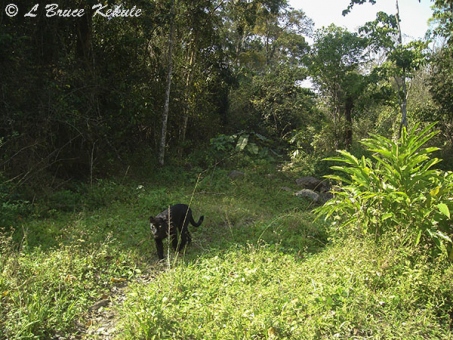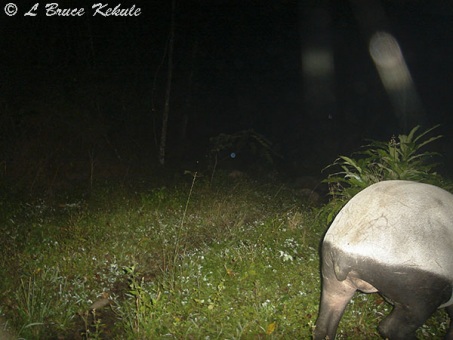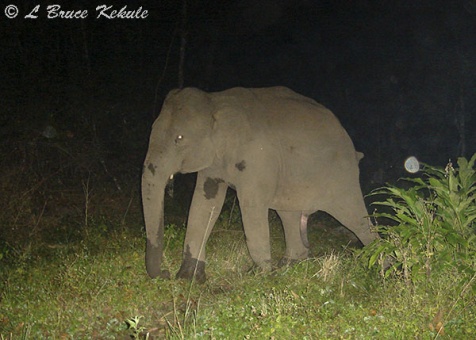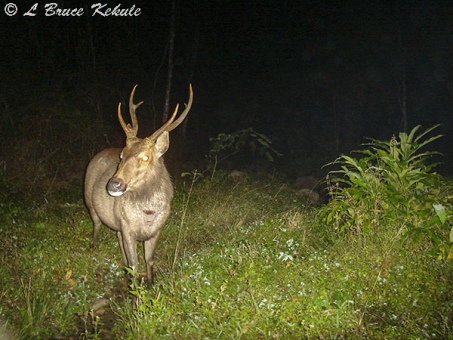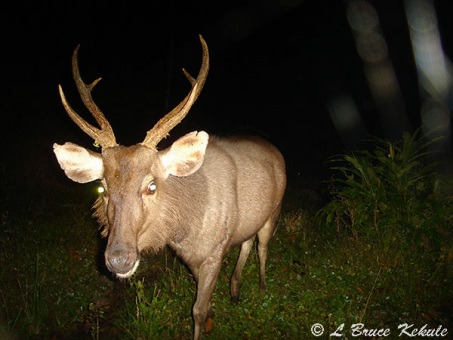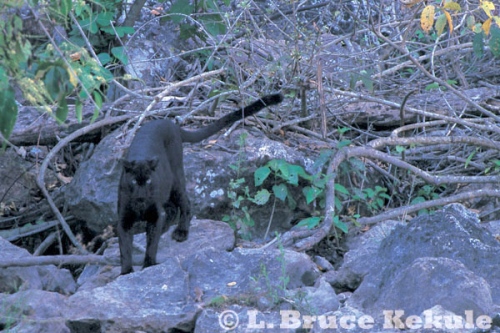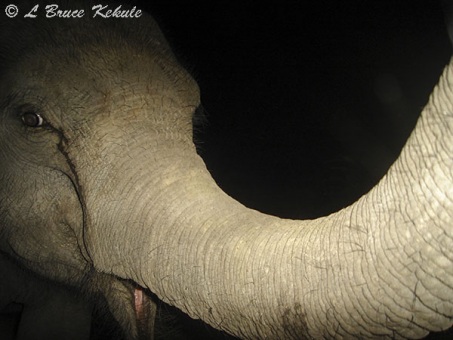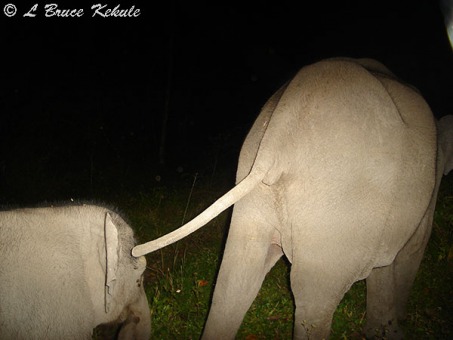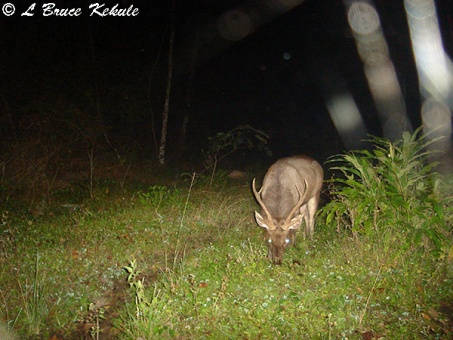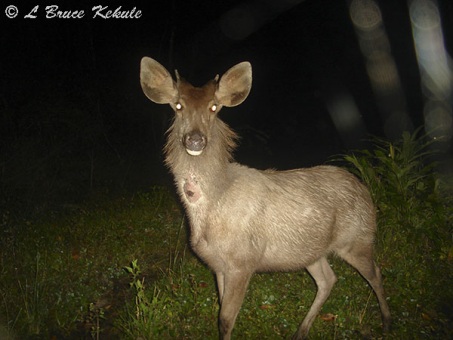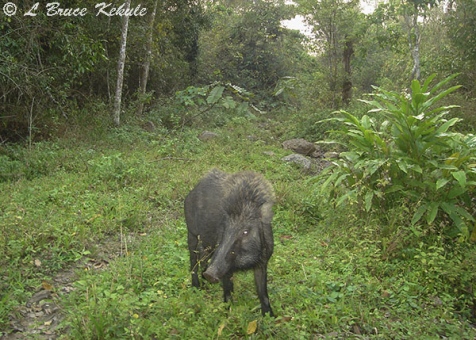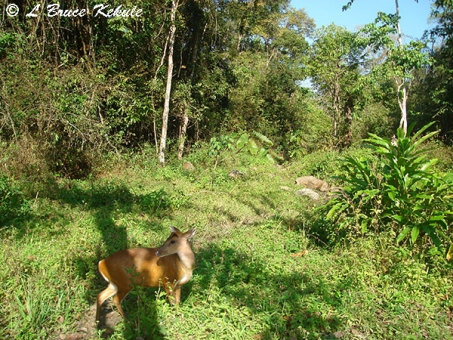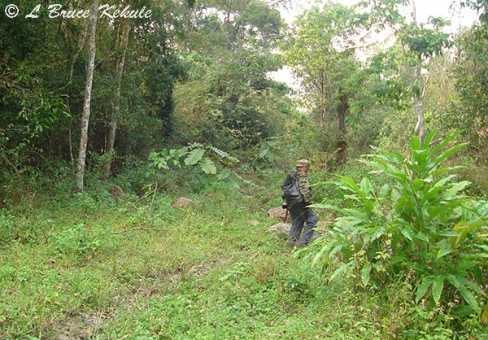Archive for May, 2013
Nikon SB-600/SB-800-900/SB-28 DSLR slave flash
Nikon remote flashes
Nikon SB-600 (middle), SB-800 (left) and SB-28 (right) remote flashes.
After installing and testing my D700 trail cam with several remote SB-28 flashes in the forest, it was apparent I needed another flash closer to the cam on the right side of the fallen tree to eliminate the shadow.
I had an old SB-600 that has been one of my mainstay flashes for some time and since I don’t shoot much flash now, thought I would regulate this one to camera trap duty.
SB-600 and SB-28 with Yongnuo Wireless flash triggers and ‘D’ cell externals.
I will be setting this flash with four brand-new ‘Enelope’ rechargeable batteries to see how long they will last on standby.
A Yongnue 602n wireless flash trigger and two ‘D’ cell externals is used and the assembly is housed in one of my ‘elephant proof’ aluminum boxes. I have now tested the ‘D’ cells and getting more than a month on stand-by…!
‘D’ cells in place.
On this box, I beefed-up the ends and drilled and tapped for 10mm machine screws and set with epoxy to act as pivots, and a ‘L’ bracket on the bottom and a 1” x ¼” x 14” aluminum strap across the top of the log. I can aim the flash straight at the trail and lock it in place. A generic flash diffuser is shortened to about 1/4″ and then ‘Goop’ is applied after camouflage painting.
By using two or three 3” x 3/8” stainless lag bolts, the flash will be tight, and elephants or bears would have hard time breaking these flashes. However, a bear-tooth through the diffuser could be a problem. Of course the proof is in the pudding and we shall see because the big elephant herd will come through one day, and they will surely have a go at destroying the whole set…!
SB-800 with an extra AA battery pack (5 AA cells).
In this box, I can also use a Nikon SB-28 flash that has a great stand-by feature, and is fairly cheap and readily available on the second hand camera market. A SB-800/900 can also be used.
I’m also working on a couple of SB-800s that will have extra Nikon battery packs (5-AAs) set to remote plus the 6-pack. During testing, they work extremely well but are still not TTL. Still working on that. Hope this helps those who need some tough slave flashes for your DSLR trail cam.
SB-800 with Nikon 6-AA battery pack.
Nikon D700 trail cam: The first set
Elephant, banteng, civet and bat captured
Wild elephant; not sure why the cam tripped with the jumbo on the far side of the sensor??
Went into Huai Kha Khaeng to check my D700 trail cam a couple of days ago….the weather was horrible with a big storm brewing and rain had already started to fall. I had to get in and get out.
The young elephant headed for the cam; and it tripped again.
Instead of topping up the card, batteries and desiccant, I decided to pull the unit and two flashes that were not working. One Nikon SB28 flash was still OK and I left it.
A powerful trunk that tried to move the cam but could not budge it.
After downloading the card, I got a pleasant surprise that the D700 had performed quite well on its first stint. Elephant, banteng, a civet plus a bat had tripped the cam.
This elephant ripped most of the camouflage netting off the cam.
There were some strange false triggers but I guess with bats or birds that fly through, the unit will trip to an empty frame. I was elated to say the least.
A mature banteng bull.
I will go back in a week and will move the D700 about two-three feet closer as there is too much log in the frame and the composition is still not right.
This bull looks like he is blind in the right eye.
The elephants ripped most of the camouflage netting off the cam but it survived intact and was still as solid as the log meaning they could not budge it. The moss was OK.
A bat flying through.
Needless to say, I look forward to more sets from this cam. I will be adding another flash to the right side of the log to get rid of the shadow. It is just a matter of time before a tiger or leopard jumps this log.
A common palm civet posing on the log.
Unfortunately, the civet was just inside the focal plane and therefore not in focus. But they are so common here, I’m positive I will get this critter again…! Enjoy.
The Nikon D7oo trail cam on a fallen tree.
Nikon D700 and Canon 350D trail cams on location
Nikon and Canon DSLR trail cams
Nikon D700 camera trap installed on a fallen tree trunk.
Set-up my Nikon D700 and Canon 350D at two locations in Huai Kha Khaeng that are frequented by tigers and leopards, plus many other Asian animals like elephant, gaur, banteng and more. Both cams trigger in continuous mode (three to four shots per actuation).
Nikon D700 camera trap with moss and old leaf camouflage.
The D700 was attached to a fallen tree with six legs bolted down with 3” x 3/8” stainless lag bolts. The transmitter was installed on an aluminum pole pounded into the ground and hidden in the tree roots.
Nikon ML-3 active infrared transmitter in aluminum box.
The Canon 350D was bolted to a standing tree with four lag bolts. Python cables secure both cams and the transmitter to the tree. They are both solid and if an elephant can move the tree, they can move the cams.
Canon 350D and flash installed on a tree next to a wildlife trail.
The Nikon has three flashes set off by ‘YongNuo’ wireless flash triggers with ‘D’ cell externals and three Nikon SB28s. The flashes trigger on the second shot.
Canon 350D beefed-up snorkel.
The Canon has only two flashes (Canon 270EXs) at the moment and this cam triggers them with the ‘YongNuo’ on the second shot too. A third Canon flash is in for repair after some ‘D’ cells leaked and left some residue in the box. I have beefed-up the snorkel as shown here and this should keep the elephants at bay.
Canon 350D beefed-up snorkel – close up.
I’m using four AA ‘Energizer’ Lithium batteries as power in the flashes and we’ll see how long they can last. The next job would be to add externals or ‘flash battery packs’ if the Lithium batteries are not enough for a month’s soak. I’ll be checking the Nikon and the Canon on May 17th and post something after that.
Tiger Stripes: Identify individual tigers by their stripes and markings
Nature has provided an interesting concept of identifying individuals by certain patterns like tiger stripes, or even human fingerprints for that matter. There are no two individuals alike so one can recognize the same subject in several photographs if the angle is right. I was able to pick-out the same tiger in two photos taken more than a week apart.
Two tiger cubs sparring in the lake at Tadoba.
As most of you know, I recently went to India and photographed some extremely interesting tigers in Tadoba Andhari Tiger Reserve in central India. It was an exciting trip and I got many photographs of the striped predator including jumping tigers in the lake, and close-up roadside portraits plus many more. The cats here pay no attention to the vehicles most of the time and hence, photos are pretty straightforward with the right equipment, right techniques, right timing and some luck I guess.
Tigers sparring up-close.
On the second morning of my safari, a pair of young tiger cubs entered the shallow lake for some fun and cooling off in the morning sun. I had my Nikon D3s and a 200-400mm VRII lens with a 2X converter for 800mm on a monopod and when the action began, I was ready catching the two in mid-air. This shot is probably one of my best ever photographs as a wildlife photographer.
Tiger cub posing by side of the road
Later in the safari near the end, I caught a tiger posing by the side of the road. This female cub is almost mature and about ready to leave the care of her mother and father. She has been roaming by herself more and more recently.
Tiger posing up-close: Note stripe on left cheek.
In the late afternoon on the next to the last day, a whole bunch of jeeps or ‘Gypsies’ as they are called in India were parked waiting on a sleeping tiger. We could not carry-on because the drivers had plugged-up the road so we also parked and waited.
After awhile, a cub got up from her slumber in the bush on the left and crossed the road in front of us. She walked between the cars and an Indian forest official, and then came over to the right side of our jeep and plopped down with her left front paw resting on a rock. I got many photos and some great portraits with loads of behavior and flashing canines.
Imagine my surprise when going through my photos that I was able to distinguish the tiger by the side of the road was the same animal as in the ‘jumping tigers’ shot. After almost a week, this lovely cat came back to bid me farewell and to show me once again, the magnificent beauty of these striped creatures. Also, on how one can recognize individuals by their distinct markings. A perfect ending to the saga of Tadoba Andhari: Land of the Tiger…!
A ‘Black Leopard’ again..!
An extraordinary sighting in Huai Kha Khaeng Wildlife Sanctuary
A black leopard resting at the hot spring.
Sometimes things happen in succession that boggles the mind. On May 6th I posted a tale about a ‘black leopard’ plus other Asian wild animals caught by my Sony S600 cam on a trail into a hot spring in Huai Kha Khaeng Wildlife Sanctuary, western Thailand where I’m currently running a camera trap program.
Entering the hot spring.
I also mentioned in the story that I photographed a ‘black leopard’ from a tree blind some 15 years ago just up the trail a bit. The ‘leopard spots’ image is one of my all-time favorite wildlife photographs ever. http://brucekekule.com/camera_trapping/a-black-leopard-passes-my-camera-trap/
Leaving the hot spring.
On May 7th, I was back at the hot springs to set camera traps, and to sit at the base of the old tree for some through-the-lens work. Who knows what might show-up.
I was with my friend Sarawut Sawkhamkhet, a Thai wildlife photographer. We arrived and set-up a temporary blind about 3pm. The weather was warm and balmy with nice clear-blue skies.
A full-frame shot.
At 5:45pm, the unthinkable happened! A ‘black leopard’ appeared out of the forest near the springs and walked over for a drink, and then disappeared for a short while. Then the magnificent creature came back and flopped down on all fours twitching its tail looking straight at us staying for about 10 minutes before going back in the forest where it had come from.
Kabook Kabieng hot springs deep in the interior.
I would venture to say, this is the same cat I camera trapped back in February and it could also be an offspring of my original leopard back in 1998. Who knows? I was elated to say the least.
To see and photograph a black leopard once again at this same location after all these years is something out of the extraordinary. When time permitted, I set one of my trusty Sony S600 cams at the hot spring and will go back in a couple of weeks to see what has visited the waterhole.
Then I intend to set a DSLR Nikon or Canon camera trap with several flashes for improved images. This place is truly worth the effort, time and difficulty to get here. I look forward to more incredible images from this wildlife haven.
A Black Leopard passes my camera trap
A series of images captured with a Sony S600 camera trap
A black leopard in mid-afternoon on a trail to a hotspring in Huai Kha Khaeng (cropped).
It is now late April in the forest of Huai Kha Khaeng Wildlife Sanctuary, my favorite-place in Thailand. The first rains have come and doused the dangerous forest fires that spread through the sanctuary during the dry hot season starting in March.
Full frame shot of the leopard.
As usual, I’m setting-up camera traps at various mineral deposits (natural seeps) around a ranger station deep in the interior accessible only by a dirt road. These waterholes are visited by all the large mammals including tiger and leopard, and provide excellent opportunities for some great animal shots.
An Asian tapir passes by.
As I was going through a few of my old camera traps changing out cards and batteries, I decided to have a quick look at a 2GB card that was in my Sony S600/SSI/1020, one of my first cams using a Pelican box.
A young ‘tusker’ on the trail showing off.
Imagine my surprise to see a shot of a ‘black leopard’ in mid-afternoon walking on the trail. Other denizens caught include elephant, tapir, sambar, wild pig and muntjac (barking deer) over a month period back in February to early March of this year. The cam recorded some 400 images mostly elephants and sambar. It truly was a bonus and I actually closed out the program with this cam.
Sambar stag on the trail.
I actually forgot to download the card and if I had formatted it, only a recovery program could have got them back as long as I had not filled the card with other images. Been there done that…!
Another sambar stag checking out my cam.
The black leopard brought back fond memories of this place more than 15 years ago. I was sitting in a tree blind up by the hot springs when a black leopard walked in about 4pm and posed for me at several places for over an hour.
My first black leopard in the late afternoon sun showing its spots.
The mature cat up at the hot springs.
My leopard posing on a fallen tree.
These were in the old days of slide film, and I did not know how good the shots were until the film was processed. Here are a few images from that lucky sequence many years ago.
The morel of this story: Make sure you double-check and download all your cards before formatting, or you may loose some valuable images like I almost did…!
Some other images from this set:
A very young elephant checking out the cam.
Looks like the bigger elephant lost part of its tail.
A youngish elephant on the trail.
Same elephant checking out the cam.
A sambar stag feeding on grass.
A mature sambar stag.
A young sambar stag.
Another spike stag with blotches.
And yet another spike stag.
A sambar doe.
Sambar doe close-up.
A wild pig in the late afternoon.
A muntjac (barking deer) early in the morning.
The ‘tiger hunter’ after setting the cam.



